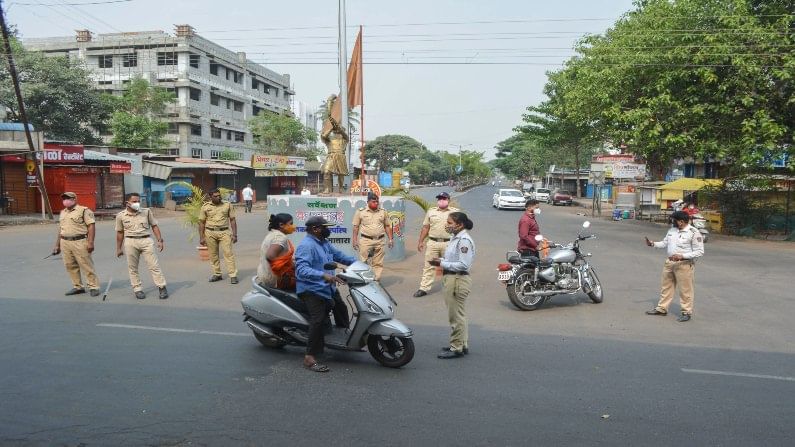Lockdowns are for pensioners; not for those who need to earn a living
Further curbs would mean more economic disruption and aggravate the damage to livelihoods caused by the past year’s strict enforced isolation and the phased easing up thereafter

With the second wave of Covid-19 infections, some states have imposed night curfews, though the efficacy of such measures in curbing the spread of the disease is questionable. Further curbs would mean more economic disruption and aggravate the damage to livelihoods caused by the past year’s strict enforced isolation and the phased easing up thereafter. Given the trade-offs, it is best to enforce Covid-19 protocols — mandatory masking, physical distancing, crowd avoidance, hand hygiene, aggressive vaccination and quick medical attention — rather than forcing people to stay indoors.
India suffered the most in 2020 due to pandemic-induced economic contraction, the Pew Research Centre said. About 32 million people who should have transitioned to the middle-income group in 2020, failed to make the cut. This is 60% of the 54 million people globally who failed to graduate to the middle-income bracket, it said.
If India’s economy had not been hit by the pandemic and the measures taken to contain it, about 99 million people would have attained middle-income status. But the economic contraction cut that figure by a third. About 75 million people were added to the list of the poor taking their total number from 59 million to 134 million, the study estimated, based on the World Bank’s economic projections for India in January 2020 and 2021.
To be in the middle-income category, a person has to spend between $10.01 and $20 a day on purchasing power parity basis. The World Bank calculates PPPs after discounting the cost of living to enable cross-country comparisons of economic activity. The latest rupee value of the dollar on PPP basis is 21.28 (versus the exchange value of Rs 74.78). So a person would have to spend at least Rs 213 a day, or a family of four Rs 25,560 a month, to be classified as middle income. (A person spending below $2 on PPP basis or Rs 43 is certified poor).
The economic fragility of Indian households is revealed by another survey that has not been officially released. Last September, the Indian Express and Times of India published the findings of a massive socio-economic survey, which the Delhi government had conducted through its officials. They went from door-to-door to 20.05 lakh households (out of 33.41 lakh) and covered an estimated 10.20 million people (out of 17 million). The survey showed that most people in Delhi would not count as middle-income by the globally-accepted definition as 42% of the households reported spending Rs 10,000 or less a month. Only 8.44% of households reported an expenditure of between Rs 25,000 and Rs 50,000 a month.
People in most other states would be worse off. Delhi’s per capita income is higher than the national average. It is projected at Rs 354,000 for 2020-21.
The Centre for Monitoring Indian Economy (CMIE), a Mumbai-based research organisation, says over 11 million non-farm jobs were lost between February 2020 and February 2021. The loss of salaried jobs was 3.8 million, that of daily-wage employment 4.2 million and of business employment three million. Some of the displaced people were absorbed in farm jobs (without adding much to productivity). The number of those employed in February was 399 million versus 406 million in February 2020, so the net decline in employment was seven million. CMIE does continuous daily surveys in four-monthly cycles so its information is granular. Mahesh Vyas, MD and CEO of CMIE, has said that not only has employment shrunk, even those who are employed may be not be better off, either financially or psychically.
As per the Federation of Automobile Dealers’ Association (FADA) vehicle registrations, which are a proxy of economic activity and consumer confidence, are yet to reach pre-pandemic levels. Between May 2020 and March two-wheeler registration were 71 percent of the year-ago figure while that of passenger cars was 91% and of trucks 53% of the pre-pandemic levels.
Normalcy continues to evade the people-facing services industries. Domestic airlines carried 77 lakh passengers in January against 128 lakh in January 2020 — or nearly 40% less. Hotels and restaurants are still hurting.
Last year’s lockdown only delayed the surge. It helped distribute the virus across the country as migrant workers fled the cities to their villages. Lockdowns are for pensioners. For others, they can be economically crippling.
(Vivian Fernandes is a senior journalist and former editor. Views expressed are personal)